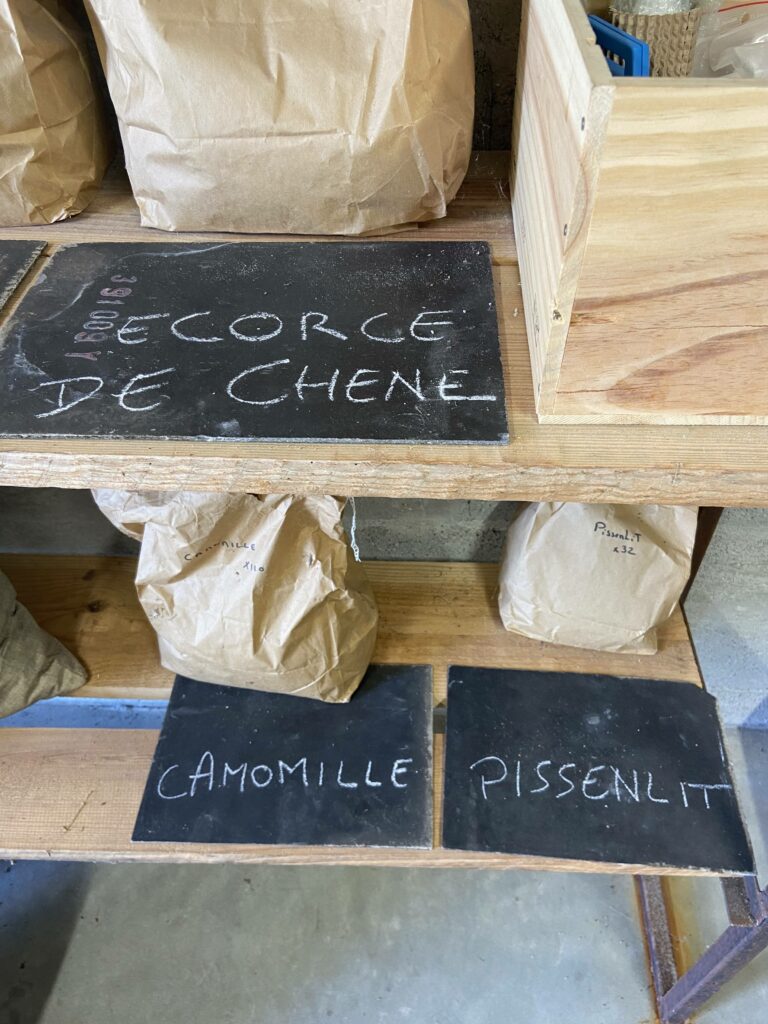
We are delighted to introduce you to Château Fourcas Hosten, a beautiful family estate located in the heart of the Listrac Médoc appellation, committed for many years to the development of biodiversity and the cultivation of organic wines.
The Estate was built around a magnificent Chartreuse, completely renovated, and its 3-hectare park planted with diversity of trees. Situated between the estuary and the ocean, it towers 43 metres above the Médoc.
Since 2006, alongside Laurent and Renaud Moumméja, the estate’s team has been leading the ambitious project of anchoring the estate in the future by equipping it with every means to express its terroir to the full potential.
*Bordeaux en Primeurs from 22nd to 24th of April, 2024*
We will be in Bordeaux during the en primeurs, feel free to confirm you if you are attending the event and if you would like to visit the Domaine and taste the wines.
The Vineyard
At the Château, there are two distinct terroirs: the Listrac plain with its clay-limestone soils, and the Pyrenean gravels of the Fourcas plateau.
Since 2010, a study of the soils has enabled us to draw up a precise map so that we can best adapt the grape varieties. As a result, Merlot and Cabernet Franc are concentrated on the arigle limestone, while the gravels are home to Cabernet Sauvignon and Petit Verdot (the last grape variety planted).

To take advantage of the potential of the clay-limestone terroir and return to the historical roots of Listrac white wines, Sauvignon Blanc and Gris were planted from 2012 (1.5 and 0.3 ha respectively), followed by Sémillon (0.4 ha). From the outset, all the vines have been grown organically.
The vineyard is still being restructured, and the soil is left fallow before being replanted.
Currently, 39% of the 40 hectares of red wine in production are planted with Cabernet Sauvignon, 57% with Merlot, 2.5% with Petit Verdot and 1.5% with Cabernet Franc.
Since 2014, all new red plantings have been carried out at 10,000 vines per hectare. This increased competition means that each vine draws more deeply on its resources to feed a smaller number of bunches. As a result, the bunches become more concentrated and develop more anthocyanins, tannins and aromas.

Harvests
The harvest plan drawn up for each plot meets the requirement of harvesting at perfect maturity. The teams multiply the number of passes and make breaks without harvesting if necessary. The rigorous optical sorting that accompanies the reception of the bunches in the cellar then guarantees the best selection.
The Château’s cool terroir produces elegant wines, with a fresh finesse.

Beyond Organic Farming, Maintaining Biodiversity
In 2010, a process of reflection and experimentation was initiated to constantly improve the quality of the vintages while cultivating the vines with respect for the environment.
In 2017, the Estate began converting to organic viticulture and has been certified since 2020 for the white and 2021 for the red.
In 2018, the Estate acquired a tisanière, a dynamiser and three small backpack sprayers to spread biodynamic preparations (cow dung, silica, etc.) manually. In 2020, a herbal tea room was created on site to establish biodynamic viticulture in a sustainable and effective way.

Winemaking and Ageing


In the winery, all the stages are meticulously carried out by gravity, guaranteeing respect for the fruit and allowing a very fine aromatic expression.
Combining wood, concrete and stainless steel, the vinification tank room has more than 40 vats with capacities ranging from 25 to 100 hl.
Vinification is tailor-made from a mature grape harvest.
Since 2018, the estate has replaced a horizontal press with a second vertical press, which is now the only tool used to produce the very best quality of concentrated and complex juices.

Until 2019, the estate aged the wine in French oak barrels, one-third of which are renewed each year to ensure a discreet wood profile.
With the 2019 vintage, 15% of the white wine is vinified in amphora. In 2020 and 2021, the estate will be using around twenty amphorae to age its red wines, to bring out the pure fruit expression.
The wines are matured in amphorae and barrels. The barrels give the wine its complexity and roundness. The amphorae preserve the purity of the fruit, freshness and minerality.
During ageing, the wine is blended: the aim is to reveal the identity of the vintage for each grape variety and to express the character of the two terroirs.
Wine Range

Château Fourcas Hosten Red
Blend of Cabernet Sauvignon, Merlot and Petit Verdot
The wine is vinified in tanks.
Aged for 12 months in barrels and, since the 2019 vintage, 15% in amphorae and 85% in barrels to further develop the fruit.
Vertical: the estate has old vintages, so please ask us for all the vintages available.

Château Fourcas Hosten White
First vinified in 2019, this cuvée is a blend of Sauvignon Blanc, Sauvignon Gris and Sémillon.
The wine is vinified and aged in barrel.


